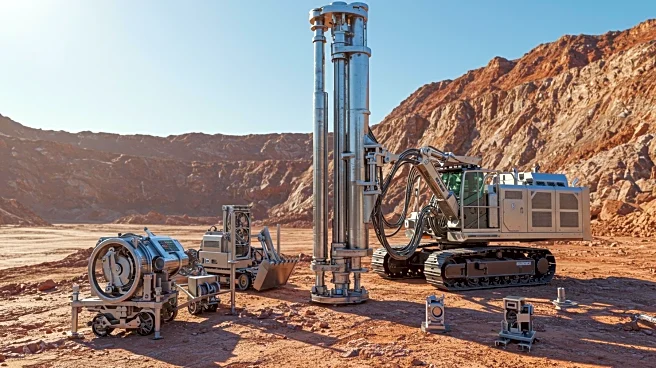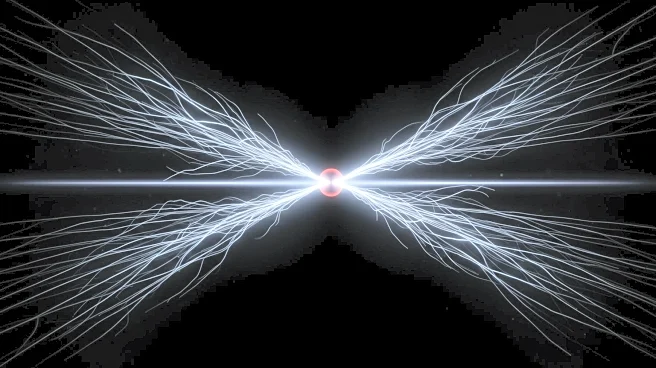What's Happening?
A recent study published in Nature discusses the development of an electromagnetic drop weight release mechanism designed for human-occupied vehicles in deep-sea environments. The study highlights the mechanism's ability to lift and release weights, achieving the necessary buoyancy for descent initiation. The research includes detailed analysis of process parameters such as current, coil length, and number of turns, which significantly affect the magnetic field density (MFD). The study also presents an optimization model using response surface methodology (RSM) to enhance the design efficiency of the electromagnetic system. The findings indicate that the system can effectively drop weights up to 25 kg, utilizing a repulsive action between permanent magnets and electromagnets, while eliminating continuous power supply needs.
Why It's Important?
The development of this electromagnetic drop weight mechanism is crucial for advancing deep-sea exploration technologies. By optimizing the design for efficiency and reducing power consumption, the system offers a sustainable solution for underwater vehicles, which rely heavily on battery power. This innovation could significantly impact industries involved in marine research, underwater construction, and resource extraction, providing a reliable method for controlling buoyancy and descent in challenging environments. The study's findings also contribute to the broader field of electromagnetism, offering insights into the application of magnetic fields in engineering solutions.
What's Next?
Future research may focus on further refining the electromagnetic system to enhance its performance and reliability in various underwater conditions. Potential collaborations with marine technology companies could lead to the commercialization of this mechanism, integrating it into existing deep-sea vehicle designs. Additionally, ongoing testing in hyperbaric chambers and real-world sea conditions will be essential to validate the system's effectiveness and durability.
Beyond the Headlines
The study raises important considerations regarding the use of non-magnetic materials in the construction of human-occupied vehicles to prevent interference with the electromagnetic system. This aspect highlights the intersection of material science and engineering in developing advanced technologies for extreme environments. Furthermore, the research underscores the importance of interdisciplinary approaches in solving complex engineering challenges.













